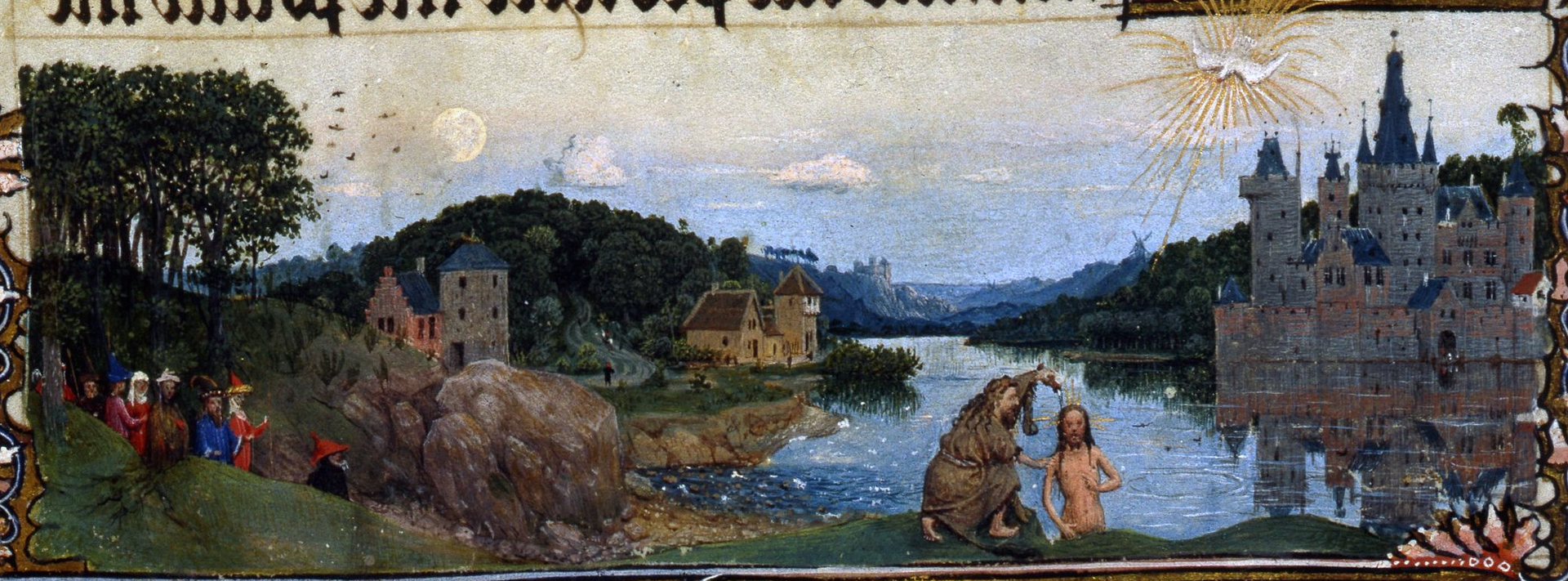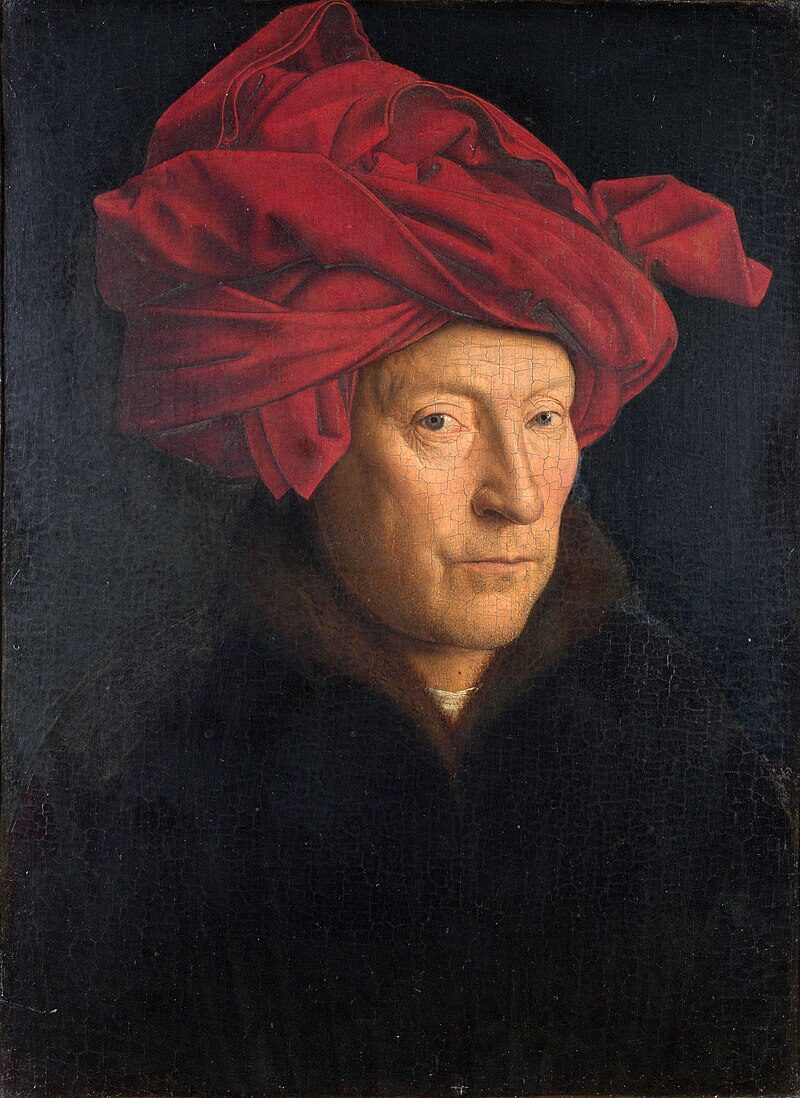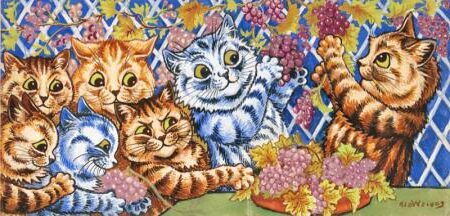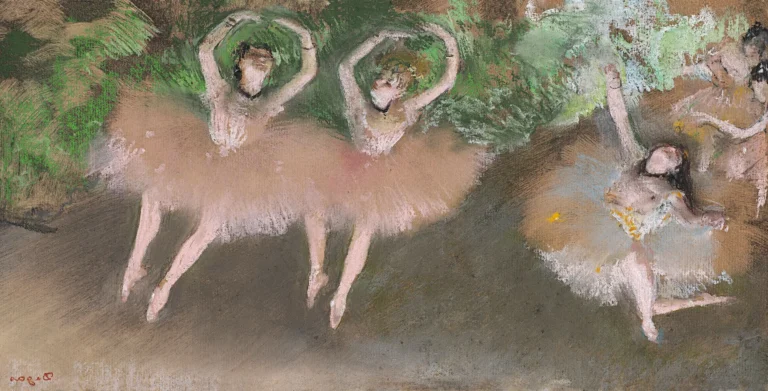Jan van Eyck Painter: The Revolutionary Master of Flemish Renaissance Art
Born: Around 1380 or 1390, Prince-Bishopric of Liège, Holy Roman Empire
Death: 9 July 1441, County of Flanders, Burgundian Netherlands
Art Movement: Early Netherlandish painting, Northern Renaissance
Nationality: Flemish
Influenced By: Robert Campin
Jan van Eyck Painter: The Revolutionary Master of Flemish Renaissance Art
Life and Works of Jan van Eyck
Jan van Eyck revolutionized painting through his mastery of oil techniques and remarkable attention to detail. His career spanned significant appointments at royal courts and produced works that continue to influence art history today.
Early Life and Training
Jan van Eyck was born before 1390, likely in Maaseik in present-day Belgium. Details about his early training remain scarce, though art historians believe he likely trained in manuscript illumination before transitioning to panel painting.
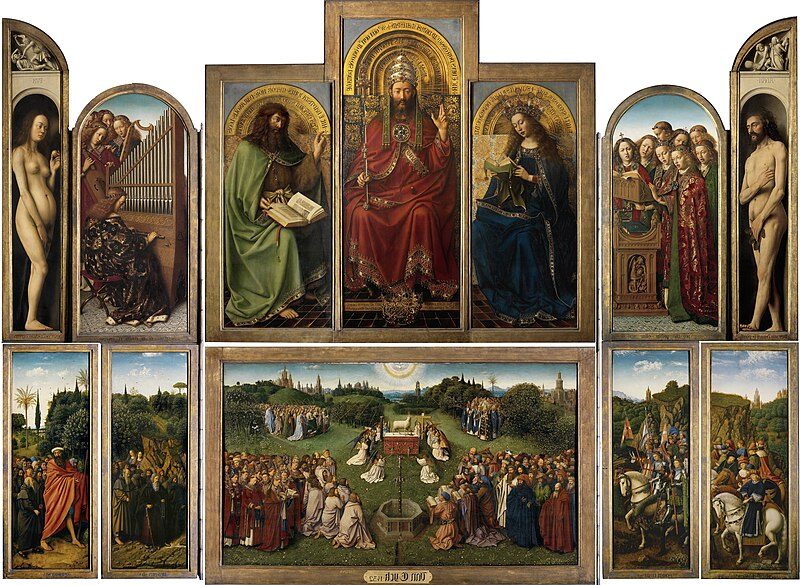
Ghent Altarpiece (1432) by Hubert and Jan van Eyck
His early artistic development occurred during a pivotal period in Northern European art when techniques were rapidly evolving. Van Eyck quickly distinguished himself through his exceptional handling of oil paint, which allowed him to create unprecedented levels of detail and luminosity.
Unlike many contemporaries, van Eyck developed methods to build up thin, translucent layers of paint that captured the way light interacts with different surfaces. This technical innovation helped him achieve the remarkably realistic effects in his portraits and religious works.
Role as a Court Painter
In 1422, van Eyck began service as court painter to John of Bavaria in The Hague. After John’s death, he moved to Bruges in 1425 to work for Philip the Good, Duke of Burgundy, who became his most important patron.
As court painter, van Eyck enjoyed unusual privileges. Philip paid him a substantial salary that allowed him to paint “whenever he pleased.” This arrangement freed him from financial worries and guild restrictions that limited other artists.
His position involved more than painting. Van Eyck undertook diplomatic missions for Philip, traveling to Portugal and other locations. These journeys expanded his artistic influences and knowledge.
During his court service, van Eyck created some of his most celebrated works, including portraits of nobility and complex religious pieces. His meticulous attention to symbolic details and optical effects established his reputation as the foremost painter of his time.
Final Years and Death
Van Eyck settled permanently in Bruges, where he maintained a workshop and completed his most famous works, including the “Arnolfini Portrait” and the “Ghent Altarpiece,” often considered his masterpiece.

Dresden Triptych (1437) by Jan van Eyck
The “Ghent Altarpiece,” created with his brother Hubert, showcases his technical brilliance and innovative approach to religious subjects. The multi-paneled work displays extraordinary detail in its portrayal of biblical figures and landscapes.
Van Eyck’s influence spread throughout Europe as his techniques and style inspired generations of artists. He died on July 9, 1441, in Bruges at the height of his career and reputation. Philip the Good supported van Eyck’s widow and family after his death, demonstrating the painter’s valued position at court.
Artistic Style and Contributions
Jan van Eyck revolutionized 15th-century painting through his mastery of oil techniques and extraordinary attention to detail. His innovative approach combined scientific observation with artistic expression, creating works of unprecedented realism that influenced generations of European artists.
Development of Oil Painting
Van Eyck perfected oil painting techniques that transformed European art. While he didn’t invent oil painting, he developed revolutionary methods of applying thin glazes of oil-based pigments in multiple layers. This technique allowed him to achieve rich colors, subtle transitions, and remarkable luminosity impossible with earlier tempera methods.
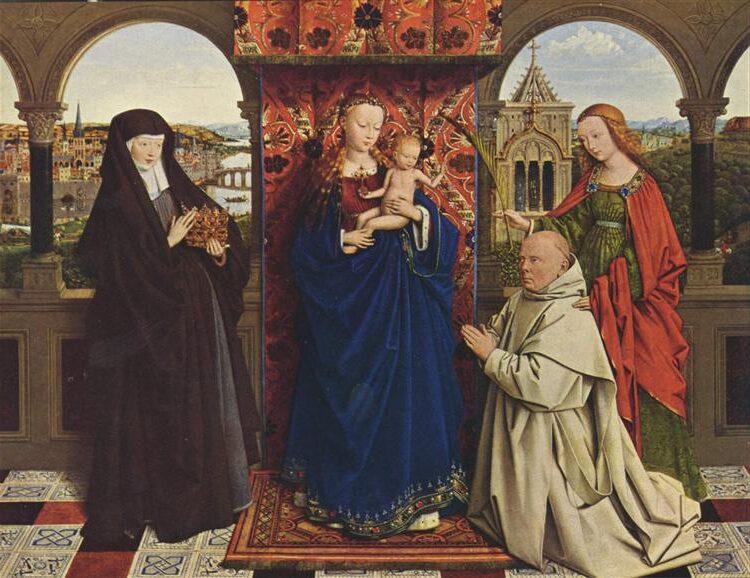
Virgin and Child with Saints and Donor (1441) by Jan van Eyck
His mastery of oil medium enabled him to create surfaces that appeared to glow from within. The slow-drying nature of oils gave van Eyck time to blend colors and build up transparent layers, creating unprecedented depth and realism.
These innovations made possible the precise rendering of textures – from the shimmer of jewels to the softness of fur – that became his signature achievement.
Realism and Detail in Portraiture
Van Eyck’s portraits display an extraordinary commitment to naturalistic representation. His works captured subjects with remarkable accuracy, revealing not just physical appearance but also personality and status.
In the “Madonna of Chancellor Rolin,” van Eyck depicted the patron with unflinching honesty, showing every wrinkle and blemish. Similarly, the “Arnolfini Portrait” demonstrates his ability to render distinctive facial features alongside intricate textiles and objects with equal precision.
He paid exceptional attention to light effects, using subtle highlights and shadows to create volume. Van Eyck’s portraits often included minutely detailed backgrounds and symbolic objects that enhanced the narrative dimension of his work.
Influence on European Art
Van Eyck’s artistic innovations spread throughout Europe, fundamentally changing painting practices. His techniques were adopted by artists in Italy, France, and Germany, creating a new standard for realistic representation.

Virgin and Child with Canon van der Paele (c. 1434–1436)
His integration of art and science – visible in his precise understanding of how light behaves on different surfaces – anticipated Renaissance ideals. The virtuosity of his panel paintings established Flemish art as a major force in European culture.
Artists for generations studied van Eyck’s works, attempting to understand how he achieved such extraordinary effects. His meticulous approach to visual reality inspired a tradition of northern European painting that valued observation and technical precision.
Masterpieces and Their Impact
Jan van Eyck created several revolutionary works that transformed Western art through his innovative use of oil paint and remarkable attention to detail. His paintings showcase incredible realism and technical brilliance that influenced generations of artists.
The Ghent Altarpiece
The Ghent Altarpiece (1432), also known as “The Adoration of the Mystic Lamb,” stands as Jan van Eyck’s most ambitious work. This massive polyptych contains 12 panels and was begun by his brother Hubert van Eyck, though Jan completed most of it.
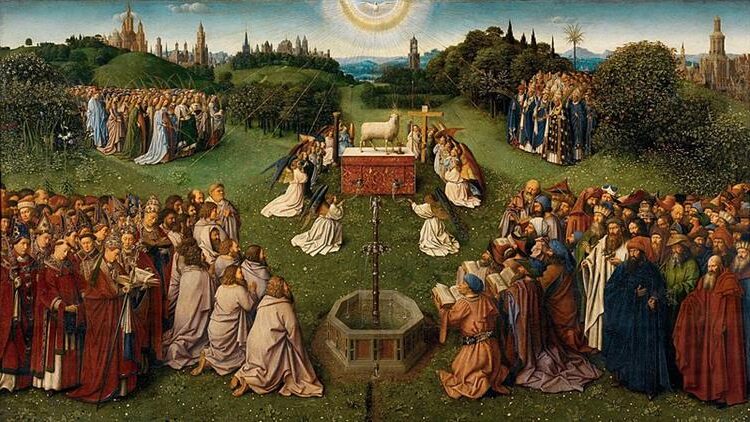
The Ghent Altarpiece. Adoration of the Lamb (detail) (1432)
The altarpiece displays extraordinary technical skill with its intricate details and complex symbolism. Each panel reveals van Eyck’s mastery of light, texture, and perspective, capturing everything from gleaming jewels to distant landscapes with astonishing precision.
When opened, the altarpiece presents a heavenly vision centered around the Mystic Lamb. Its revolutionary realism broke new ground in European painting, establishing van Eyck’s reputation as a technical innovator.
The work survived numerous threats throughout history, including fires, theft, and wars. Today, it remains in St. Bavo’s Cathedral in Ghent, Belgium, where it continues to attract visitors from around the world.
The Arnolfini Marriage
“The Arnolfini Marriage” (1434) represents one of van Eyck’s most famous and enigmatic works. This small panel painting, housed in London’s National Gallery, depicts a well-dressed couple in a meticulously rendered interior space.


The painting’s extraordinary detail showcases van Eyck’s technical brilliance. Every element—from the fur-trimmed clothes to the brass chandelier—is rendered with breathtaking accuracy. The convex mirror on the back wall, reflecting tiny figures including possibly the artist himself, demonstrates his fascination with optical effects.
Art historians debate whether the painting depicts an actual marriage ceremony or simply a wealthy merchant and his wife. Regardless, its revolutionary approach to domestic portraiture significantly influenced how artists portrayed private life.
The painting’s famous inscription—”Jan van Eyck was here”—adds to its mystique and suggests the artist’s role as witness to an important moment.
Other Notable Works
Van Eyck’s remarkable talent extended beyond his most famous pieces to several other masterpieces. “The Annunciation” (c. 1434-1436) demonstrates his skill with architectural space and light, creating a scene where heavenly radiance literally transforms the physical environment.


“The Virgin of Chancellor Rolin” (also known as “The Rolin Madonna”) at the Louvre shows a donor figure in prayer before the Virgin and Child. The painting’s detailed landscape visible through windows behind the figures showcases van Eyck’s ability to create depth and atmosphere.
His portraits, including the possible “Self-Portrait” (1433), reveal his psychological insight and ability to capture individual character. These works established new standards for portraiture through their unflinching realism and attention to facial features.
Van Eyck’s innovations in these works—particularly his handling of oil paint to create luminous surfaces—influenced art throughout Europe for centuries to come.
Frequently Asked Questions
Jan van Eyck transformed painting in the 15th century through his technical innovations and artistic vision. His work established new standards for realism and influenced generations of artists throughout Europe.
What are some notable techniques and innovations introduced by Jan van Eyck in painting?
Jan van Eyck revolutionized oil painting by developing new methods of applying translucent glazes. This technique allowed him to achieve unprecedented levels of detail and luminosity.
He also mastered the optical effects of light, creating surfaces that seemed to glow from within. His innovations with oil medium produced remarkable depth and brilliance in colors.
Van Eyck also pioneered highly detailed realism in portraiture. He captured textures with astonishing accuracy—from fabric folds to individual hairs—creating an almost photographic quality centuries before photography existed.
Which works of art is Jan van Eyck most celebrated for?
“The Ghent Altarpiece” (also known as “The Adoration of the Mystic Lamb”) stands as van Eyck’s masterpiece. This large, multi-paneled work showcases his technical virtuosity and symbolic complexity.
“The Arnolfini Portrait” remains one of his most famous and enigmatic paintings. This double portrait features intricate details including a convex mirror reflecting the room’s interior.
Other celebrated works include “Madonna of Chancellor Rolin,” “The Madonna with Canon van der Paele,” and “Portrait of a Man with a Red Turban,” which many believe is a self-portrait.
How did Jan van Eyck contribute to the Northern Renaissance?
Van Eyck helped define the Northern Renaissance by establishing oil painting as the dominant medium in northern Europe. His meticulous attention to detail influenced countless artists who followed.
He elevated secular portraiture to new heights, bringing psychological depth to his subjects. His work demonstrated that painting could capture both physical reality and spiritual symbolism.
Van Eyck’s emphasis on observed reality rather than idealized forms distinguished Northern Renaissance art from Italian approaches. This naturalistic tradition would flourish in the Netherlands for centuries.
What impact did Jan van Eyck’s paintings have on the art world during his lifetime?
During his lifetime, van Eyck enjoyed tremendous prestige and recognition. His patrons included Philip the Good, Duke of Burgundy, and wealthy merchants who commissioned portraits and religious works.
Artists throughout Europe sought to learn his techniques. His reputation spread to Italy, where painters marveled at his ability to render textures and light with such precision.
His works commanded exceptionally high prices, indicating the value contemporaries placed on his skill. Even in his own time, his paintings were treated as precious objects of both artistic and monetary worth.
Can you describe Jan van Eyck’s role and influence at the Burgundian court?
At the Burgundian court, van Eyck held the prestigious title of court painter to Philip the Good. Beyond his artistic duties, he served as a diplomat and trusted advisor.
In 1428, Philip sent van Eyck to Portugal to paint a portrait of Isabella of Portugal, the Duke’s prospective bride. This demonstrates the trust placed in van Eyck for sensitive diplomatic missions.
The Duke paid van Eyck an annual salary, an unusual arrangement that provided financial stability. This royal patronage allowed him to work without financial constraints, fostering his artistic innovations.
What are the distinguishing characteristics of Jan van Eyck’s painting style?
Van Eyck’s style features meticulous attention to microscopic detail. He painted individual eyelashes, reflections in eyes, and texture variations with remarkable precision.
His work displays a mastery of light effects. He used light not just for realism but also for symbolic purposes in his religious paintings.
Van Eyck incorporated complex symbolism into seemingly straightforward scenes. Objects in his paintings often carry hidden meanings, creating layers of interpretation beneath the realistic surface.

